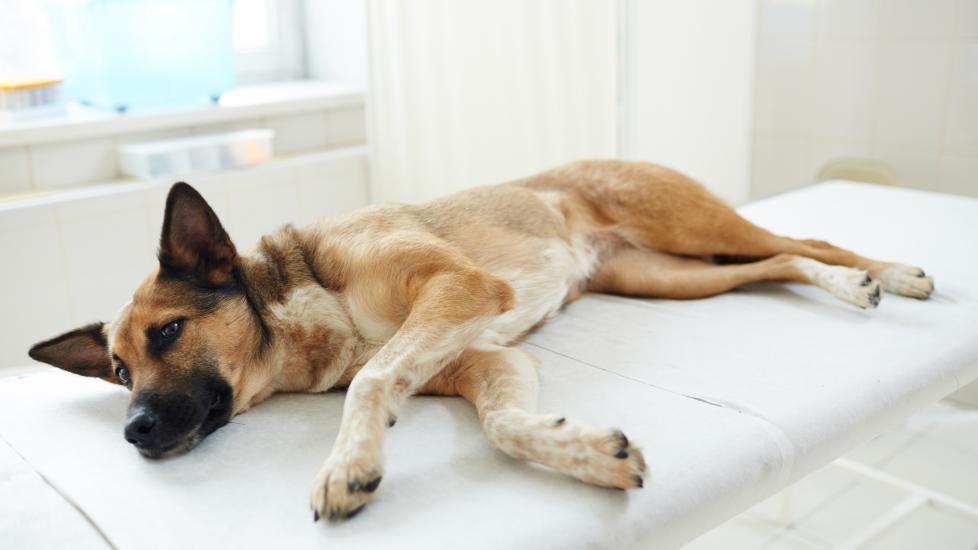How To Perform CPR on a Dog: CPR for Dogs
shironosov/iStock / Getty Images Plus via Getty Images
When a pet emergency happens, the best things you can do are to be prepared and remain calm.
In the event you’re faced with a traumatic event, such as finding your dog unresponsive or unconscious, you’ll want to know how to perform CPR on a dog.
If you are home alone and no one can come to help you, do not attempt CPR. Rush your pet to the closest emergency vet clinic.
What Is CPA in Dogs?
Before knowing dog CPR, it’s important to understand cardiopulmonary arrest (CPA) in dogs. CPA in dogs is when a dog’s heart stops beating, and they stop breathing. CPA in dogs can be caused by various triggers, such as:
-
Trauma
-
Toxin ingestion
-
Acute or chronic illness
CPA is a life-threatening medical emergency that can quickly lead to death, as damage to the brain and other organs starts to occur in as little as four minutes without oxygen.
If you are home alone and no one can come to help you, do not attempt CPR. Rush your pet to the closest emergency vet clinic.
If your dog is unresponsive, it may be difficult to tell if they are experiencing CPA. In this case, it’s crucial that you take a few seconds to assess the situation:
- Are they responsive? Call them by name and try to shake them awake.
-
Are they breathing? Look to see if their chest is moving up and down.
-
Is their airway clear? Check to see if anything is blocking their throat, such as a rawhide or toy. If you see anything in the back of the throat, try to remove it, but be careful not to push farther into their throat.
-
If your dog fights you when you try to look in the back of their throat, stop immediately. They are not in need of CPR and could bite you.
If your pet is responsive or breathing, they do not need CPR—even if they are unconscious. However, you must get them to an emergency vet clinic ASAP.
If your dog is not responding when you call their name or shake them, is not breathing, and is allowing you to open their jaw with no resistance, start CPR immediately.
What Is Dog CPR?
Cardiopulmonary resuscitation (CPR) or dog CPR is an emergency lifesaving procedure that includes both chest compressions and mouth-to-snout breathing.
Chest compressions are used to mimic the beating heart and circulate blood with oxygen and nutrients to the organs. Mouth-to-snout breathing is used to mimic normal breathing through the lungs to facilitate oxygen uptake and carbon dioxide excretion.
If your dog is in CPA and you have someone who can drive you to the vet while you perform CPR, start CPR immediately and continue to do in route.
If you are home alone and no one can come to help you, do not attempt CPR. Rush your pet to the closest emergency vet clinic.
How To Perform CPR on Your Dog
1. Lay Your Dog on Their Side
To start chest compressions, place your dog on the floor so that they are lying on one side, and kneel beside them with their spine toward you. Make sure that your:
- Shoulders are directly above your hands
- Elbows are locked
- Core (abdominal) muscles are engaged for compressions
- Hands are placed one on top of the other with fingers interlocked or interdigitated
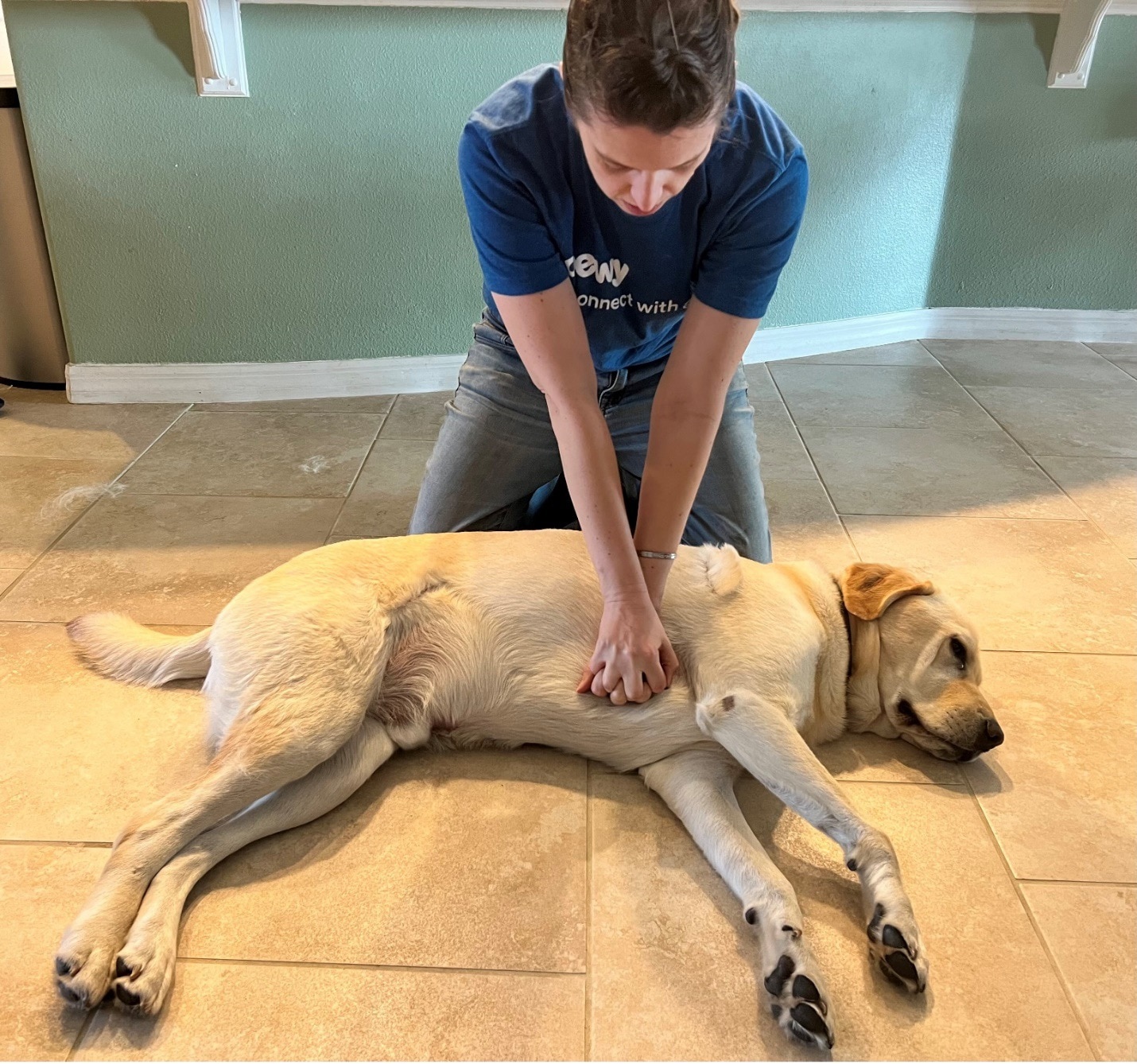


Your dog’s size and shape will determine where you place your hands:
- Medium Dogs (21–50 pounds): Over the widest part of the chest
- Large and Giant Dogs (51+ pounds): Over the widest part of the chest
- Keel-Shaped Dogs (e.g., Greyhounds): Over the heart
- Flat-Chested Dogs (e.g., English Bulldogs): Over the sternum (breastbone) with the dog on their back
2. Begin Chest Compressions
Chest compressions should be performed at a rate of 100–120 compressions per minute, regardless of the size or breed of the dog.
Each compression should reach a depth of one-third to one-half of the width of the pet’s chest. Be sure to allow the chest to rise fully between compressions, by pushing hard and fast.
To find the point over the heart, pull the dog’s elbow one-third of the way up on the dog’s chest. The point of the elbow on the chest is where the heart is located.

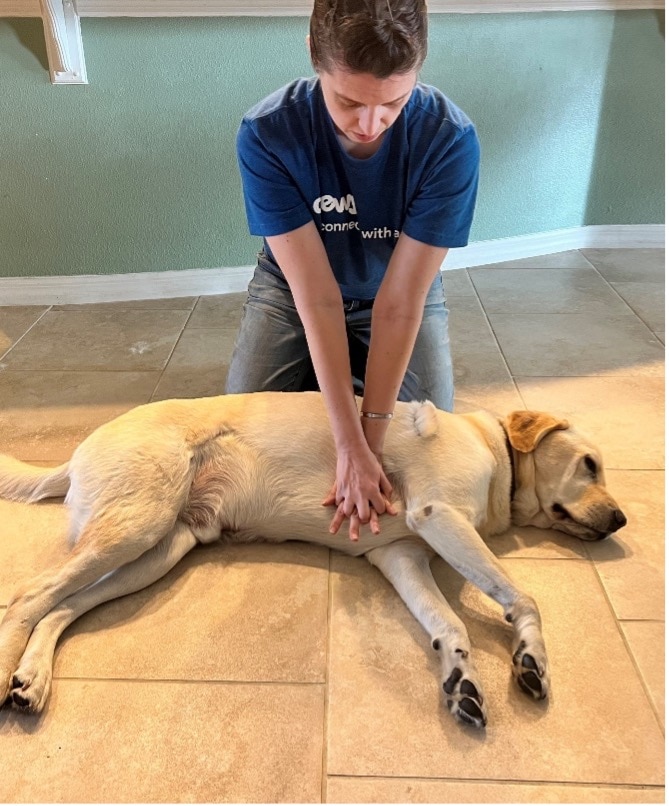
To find the widest part of the chest, feel for the top of the ribcage while the dog is lying on one side.
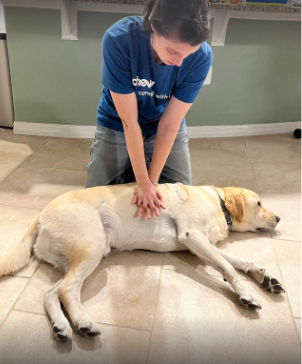
Dog CPR Small Dogs
For small dogs (less than 15 pounds), a one-hand method should be used.
In the one-hand method, the hand should be wrapped around the breastbone so that the thumb is over the heart pointing toward the spine.
The compression should be performed by moving the thumb toward the other fingers, while keeping the thumb parallel with the palm.

3. Start Giving Mouth-to-Snout Breaths
To perform mouth-to-snout breathing on a dog:
- Use one hand to hold the dog’s mouth closed.
- Keep the dog’s head flat on the floor with the neck extended in line with the spine.
- Put your mouth over both nostrils, creating a seal.
- Blow quickly—TWICE into the nostrils.
- Look to make sure the chest rises as you blow in.
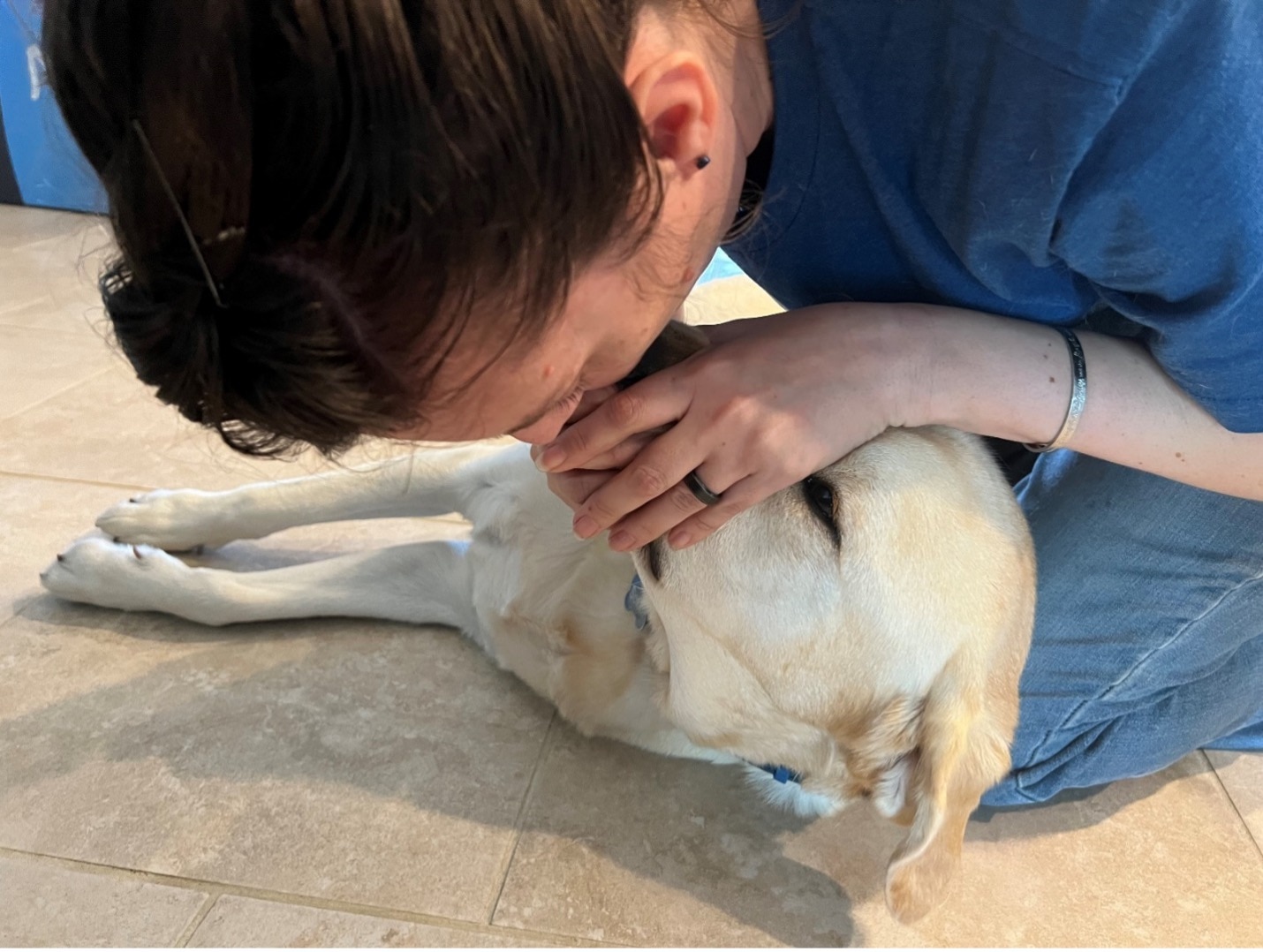
4. Continue the Pattern
CPR on dogs includes rotating between chest compressions and mouth-to-snout breathing.
Step 1: Using the appropriate chest compressions for your size and breed of dog as outlined above, perform a total of 30 chest compressions.
Step 2: Stop the chest compressions and pause for about five seconds.
Step 3: Give your dog two quick breaths using the mouth-to-snout technique.
Step 4: Repeat Steps 1–3.
Remember to stop the compressions before administering the breaths. Otherwise, the air will not move into the lungs.
5. Switch People if Possible
If you have a helper, one person can give the chest compressions and the second person can give the breaths.
Remember to stop the compressions before administering the breaths. Otherwise, the air will not move into the lungs. Rescuers can switch places every two minutes or so to prevent fatigue.
Stop CPR if your dog becomes conscious, is breathing on her own, or starts reacting to you.
Transporting Your Dog to Veterinarian
The goal of at-home CPR is to keep your dog alive long enough to transport them to a vet. As soon as you are able, load the pet into the car and continue CPR while in route (but only if you have another person to drive).
CPR should never be performed while driving and should only be performed in the car if you are safely able to do so. To move your dog safely, a towel or sling positioned underneath them will help to cushion as you transport from floor to car.
If you are alone and cannot get help to transport your pet to the vet, do not attempt CPR and instead immediately take your pet to the closest veterinarian or 24-hour veterinary emergency hospital.
